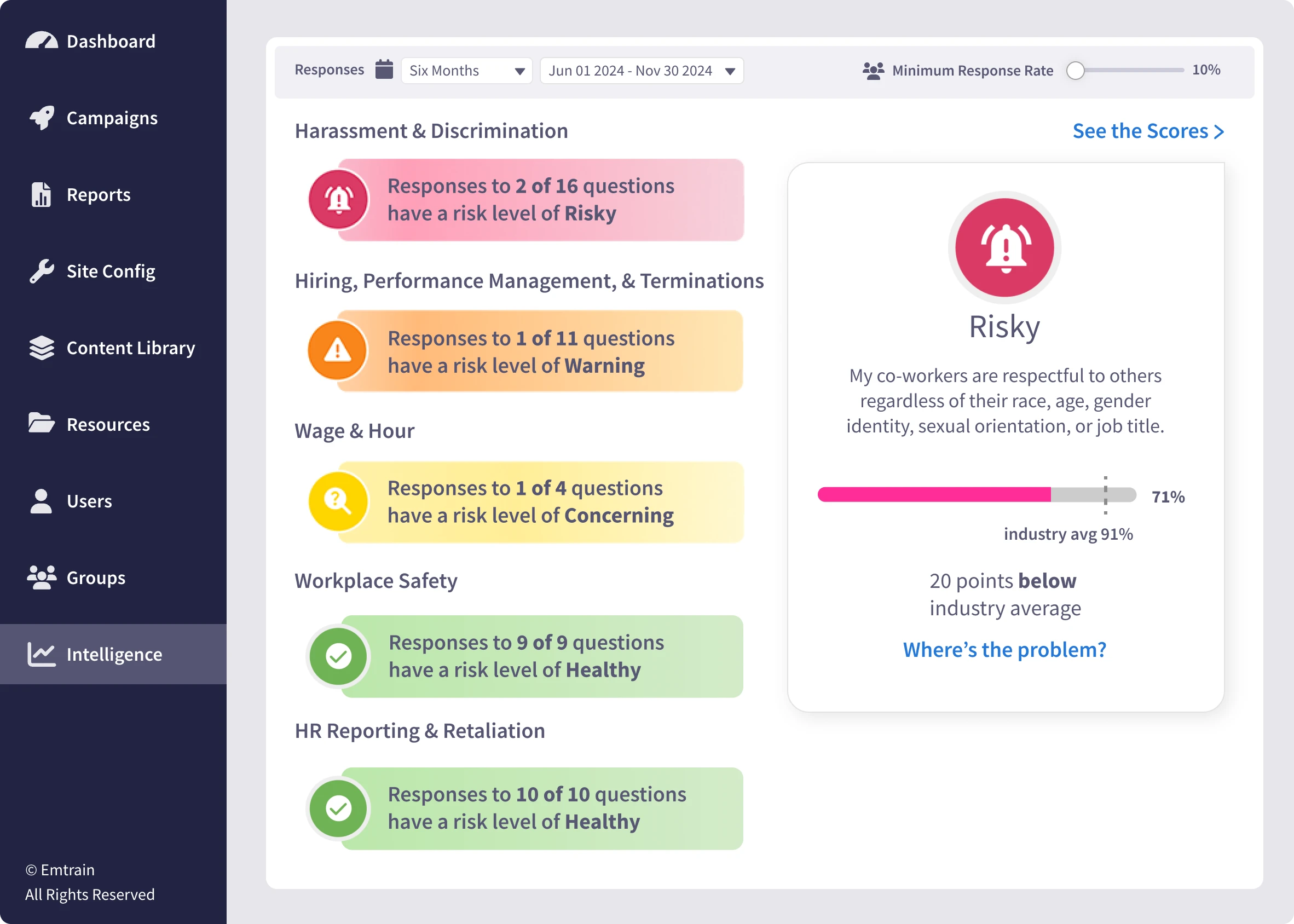Home » Concepts » Discrimination & Harassment » Retaliation
Retaliation involves adverse actions taken against an employee in response to their participation in legally protected activities, such as filing a discrimination complaint or participating in an investigation.
Emtrain’s harassment training course is engaging, interactive, and designed to spot and reduce EEO risk.

The concept of workplace retaliation has evolved significantly over time. In the early 20th century, employees had limited legal protections against retaliatory actions by employers, often facing dismissal or other adverse consequences for reporting unethical or illegal practices. The labor movements of the 1930s began to address these issues, advocating for workers’ rights and leading to the establishment of laws that offered some degree of protection.
A pivotal moment occurred with the enactment of the Civil Rights Act of 1964, which, among other provisions, prohibited employment discrimination and laid the groundwork for addressing retaliation. Subsequent legal developments, such as the establishment of the Equal Employment Opportunity Commission (EEOC), further strengthened protections against retaliation, ensuring that employees could report misconduct without fear of adverse consequences.
Retaliation remains a significant concern in employment discrimination cases. In fiscal year 2023, retaliation claims constituted 39.2% of all charges filed with the EEOC, underscoring the need for robust workplace protections. (Source: EEOC)
Retaliation can manifest in various forms within the workplace. Understanding these scenarios is crucial for recognizing and addressing such behavior:
These examples highlight the subtle and overt ways retaliation can occur, emphasizing the importance of vigilance and proactive measures to prevent such behaviors.
Creating a safe and inclusive work environment requires proactive strategies to address and prevent retaliation. Organizations should:
Implementing these practices promotes a culture of trust and accountability.
Preparing for a retaliation situation involves proactive measures, including:
By taking these steps, employees can protect themselves and ensure that their rights are upheld.
Implementing these practices promotes a culture of trust and accountability.
Microlessons:
Courses:
Resource Download:
Blog Articles:
Video Preview: